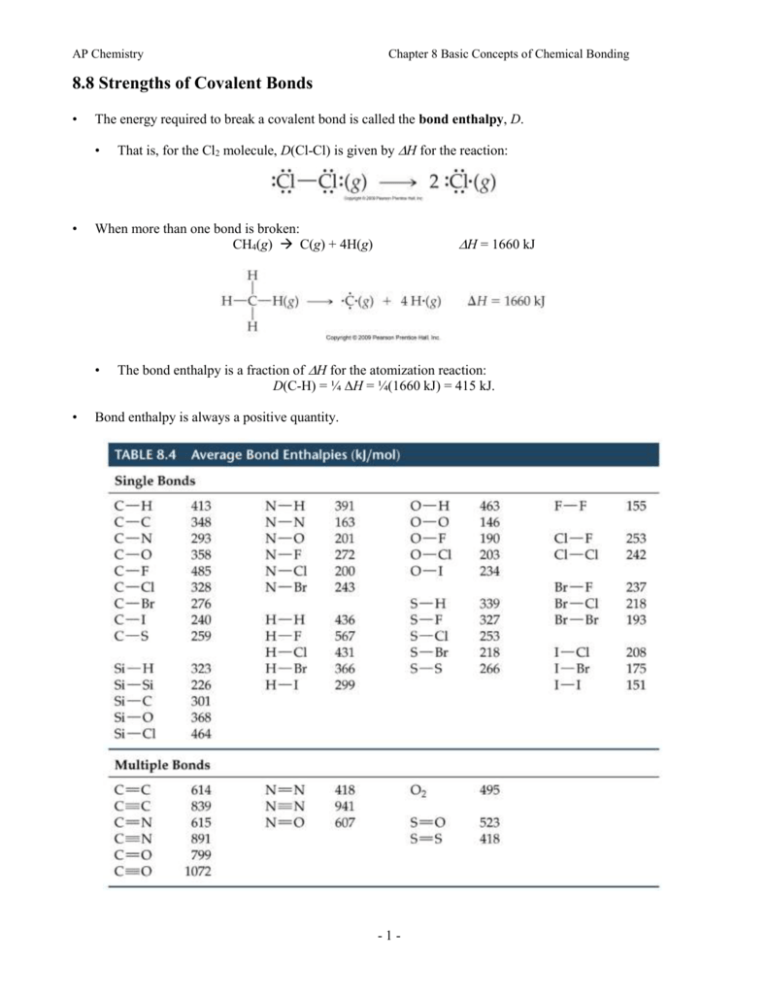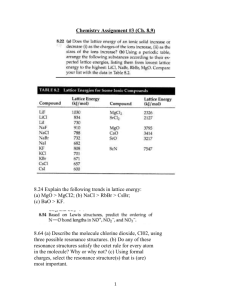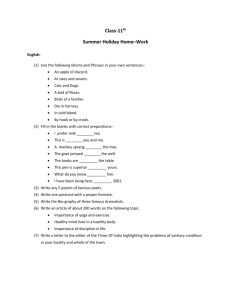Bond Enthalpies Chapter 8 notes
advertisement

AP Chemistry Chapter 8 Basic Concepts of Chemical Bonding 8.8 Strengths of Covalent Bonds • The energy required to break a covalent bond is called the bond enthalpy, D. • • When more than one bond is broken: CH4(g) C(g) + 4H(g) • • That is, for the Cl2 molecule, D(Cl-Cl) is given by H for the reaction: H = 1660 kJ The bond enthalpy is a fraction of H for the atomization reaction: D(C-H) = ¼ H = ¼(1660 kJ) = 415 kJ. Bond enthalpy is always a positive quantity. -1- AP Chemistry Chapter 8 Basic Concepts of Chemical Bonding Bond Enthalpies and the Enthalpies of Reactions • We can use bond enthalpies to calculate the enthalpy for a chemical reaction. • We recognize that in any chemical reaction bonds need to be broken and then new bonds form. • The enthalpy of the reaction is given by: • The sum of bond enthalpies for bonds broken less the sum of bond enthalpies for bonds formed. • Where Hrxn is the enthalpy for a reaction, Hrxn = D(bonds broken) – D(bonds formed) • We illustrate the concept with the reaction between methane, CH4, and chlorine: CH4(g) + Cl2(g) CH3Cl(g) + HCl(g) • In this reaction one C-H bond and one Cl-Cl bond are broken while one C-Cl bond and one H-Cl bond are formed. So Hrxn = [D(C-H) + D(Cl-Cl)] - [D(C-Cl) + D(H-Cl)] = -104 kJ. • The overall reaction is exothermic which means than the bonds formed are stronger than the bonds broken. • The above result is consistent with Hess’s law. Using bond enthalpies to calculate ΔHrxn. Average bond enthalpies are used to estimate ΔHrxn for the reaction in Equation 8.13. Breaking the C—H and Cl—Cl bonds produces a positive enthalpy change (ΔH1, whereas making the C—Cl and H—Cl bonds causes a negative enthalpy change (ΔH2). The values of ΔH1 and ΔH2 are estimated from the values in Table 8.4. From Hess's law, ΔHrxn = ΔH1 + ΔH2. -2- AP Chemistry Chapter 8 Basic Concepts of Chemical Bonding Sample Exercise 8.12 (p. 328) Using Table 8.4, estimate ΔH for the reaction in the figure (where we explicitly show the bonds involved in the reactants and products). Practice Exercise 8.12 Using Table 8.4, estimate ΔH for the reaction shown. -3-








